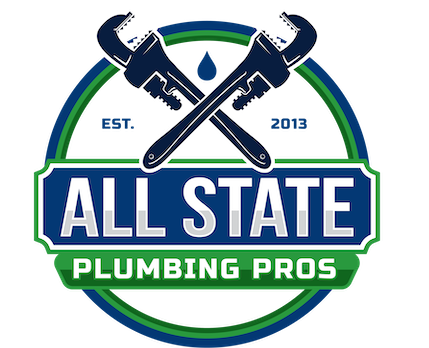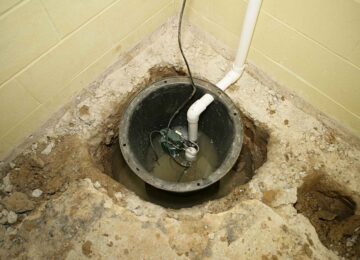Every homeowner should know how to shut off the main water valve and understand the available services before an emergency strikes. In Connecticut and across the U.S., a burst pipe, leaking fixture, or sudden plumbing issue can cause serious water damage within minutes. The ability to locate and close your valve quickly helps you control the water supply, protect your plumbing system, and minimize costly repairs.
Unfortunately, most people don’t think about their shut-off valve until a problem occurs. By that point, water may already be pooling on floors or seeping into walls. It is essential to learn where the valve is located and how to operate it, as this makes stressful situations easier to manage. It also comes in handy when you need to replace a fixture, work on a water heater tank, or complete routine maintenance without involving city services.
If you’re dealing with an active leak and can’t locate or turn on your main valve, contact our emergency plumber services for immediate help.
What Is the Main Water Shut-Off Valve?
The main water shut-off valve is the control point that regulates all water entering your house. When it’s closed, it stops water from flowing through the pipes, meaning you can work on your plumbing system safely or prevent leaks from spreading.
There are two common valve types available as options:
- Ball valve: Found in most modern homes, this valve has a lever handle and shuts off with a simple quarter-turn.
- Gate valve: More common in older properties, it uses a wheel handle that must be turned clockwise several times.
In addition to these main types, you may consider adding extra shut-off valves or control mechanisms to your plumbing system. Adding additional valves at key locations can make emergency shut-offs or routine maintenance much easier and more convenient.
| Valve Type | How It Works | How to Shut It Off |
|---|---|---|
| Ball Valve | Lever handle with a rotating ball inside | Quarter-turn clockwise until the lever is perpendicular to the pipe |
| Gate Valve | A wheel handle that raises/lowers a gate | Multiple clockwise turns until fully closed |
Where to Find the Main Water Valve Inside Your Home
In most houses, the valve is located near where the main pipe enters the property. It’s usually positioned on the side of the home facing the street or near the water meter.
Common locations include:
- Basement along the foundation wall
- Utility room or garage near the water heater tank
- Under the kitchen sink or in a crawl space
- Closet near laundry connections
In Connecticut homes, valves are often found in basements or garages to keep them protected from frost. If your shut-off is not clearly marked, trace the main pipe as it comes into the house.
If you cannot find the valve or it seems hidden, schedule a plumber to perform an inspection. A professional can label the valve, provide you with details on how it works, and verify that it shuts off correctly in case of leaks.
How to Shut Off the Main Water Valve (Step-by-Step)
Turning off your water supply doesn’t have to be complicated. Follow these steps:
- Locate the valve where the main pipe enters your home.
- Identify the type: ball valve with lever or gate valve with wheel.
- Turn clockwise: for ball valves, rotate a quarter-turn; for gate valves, keep turning until tight.
- Check a faucet to confirm no water continues to flow.
- Turn off your water heater or boiler if water will be off for hours to prevent damage.
Warning: When turning the main water valve back on, do so slowly to prevent damage to your pipes.
If you notice resistance or the valve feels stuck, don’t force it. Stiff or corroded valves can break or start leaking. Instead, use the outside meter shut-off or call a professional plumber to handle the repair promptly.
Shutting Off Water at the Meter or Curb Stop
When the inside shut-off doesn’t work, the outside meter box or curb stop is your backup. These are usually located at the edge of your yard near the street, often under a metal or plastic cover.
Steps to shut off at the curb stop or the water meter :
- Open the meter box lid carefully, using a screwdriver or utility hook.
- Locate the customer valve (leave the city-side valve alone).
- Insert a curb key or wrench into the slot.
- Turn clockwise until the valve is fully closed.
- Confirm by turning on a tap inside water should stop running.
During Connecticut winters, meter boxes may freeze. Never pour boiling water directly into the box, as pipes can crack. Instead, insulate the lid or call a plumber for safe assistance.
Apartment and Condo Shut-Off Considerations
In apartments or condos, water shut-off can be different from single-family homes. In some cases, units have private shut-off valves, while others share a main riser controlled by building staff.
Look in:
- Utility closets or cabinets
- Under sinks in bathrooms or kitchens
- Near water heaters or stacked laundry areas
If your valve isn’t accessible, contact your landlord or building maintenance team. Attempting to shut off a shared valve without notice could affect other residents.
Troubleshooting Common Issues
Problems often arise when trying to close a valve.
- Valve won’t budge: Corrosion or buildup may make it stiff. Avoid using extreme force; instead, try the outside meter shut-off.
- Valve leaks when closed: This often means the packing nut or washer has failed, and the valve may need replacement.
- Pipe burst emergencies: Use whichever shut-off you can access fastest. Outside curb stops are designed for emergencies when inside valves fail.
To prevent these issues, test your valve once a month. Rotate it slightly, then return it to its position. This keeps the mechanism moving and prevents buildup that makes it stick.
How to Turn Water Back On Safely
Restoring water to your plumbing system should be done gradually. Turning it on too quickly can send air and sediment through the pipes, causing water hammer or stress.
Here’s how to do it:
- Open a faucet at the top level of your home to let air escape.
- Slowly turn the valve counterclockwise to reopen.
- Allow water to run until the flow is steady, clearing air from the lines.
- Close faucets and check around fixtures and tanks for leaks.
This method ensures a smooth restart and reduces stress on your pipes.
When to Call a Plumber
Sometimes shutting off the water isn’t enough, especially if the valve is broken or your plumbing system is old. Call a plumber if:
- You can’t locate your main valve
- The valve is stuck or leaking
- You need to replace corroded pipes connected to the shut-off
- Your meter box is frozen or inaccessible
If you’re in Connecticut and facing an urgent issue, our emergency plumbing services are available to help restore control and prevent damage.
How Often Should You Test Your Main Water Valve?
Many homeowners don’t realize that valves can seize up over time if they aren’t used regularly. Rust, mineral buildup, and lack of movement make it harder to close the valve when you need it most. To improve reliability, test your main water valve at least once or twice a year.
When testing, slowly turn the valve clockwise to shut it off, then reopen it by turning counterclockwise. Afterward, check the faucet to confirm water flow has returned. If the valve feels stiff, only moves partially, or leaks around the stem, it’s a sign you should call a plumber for repair or replacement.
Regular testing not only keeps your valve working but also ensures your family knows where it’s located and how to use it in an emergency, providing answers to potential questions .
Preventive Tips to Avoid Water Emergencies
While knowing how to shut off the main water valve is essential, being content with preventing leaks and burst pipes in the first place is even better. A few preventive steps can save you from unexpected disruptions:
- Insulate pipes in basements, crawl spaces, and exterior walls to reduce freezing risks.
- Keep your water pressure regulated; high pressure strains valves and fixtures.
- Replace old or corroded pipes before they fail.
- Install smart leak detectors or automatic shut-off systems for added protection.
- Check appliance hoses (washing machines, dishwashers, ice makers) regularly for wear.
These small actions go a long way in protecting your plumbing system. And if prevention isn’t enough, you’ll know how to act quickly by shutting off your main water supply until repairs are made.
Conclusion
Knowing how to shut off the main water valve is one of the simplest yet most important ways to protect your home. This skill helps you stop costly leaks, limit damage from broken pipes, and stay calm during unexpected plumbing emergencies. By locating your valve, understanding the difference between ball and gate types, and practicing the shut-off process, you’ll be prepared to act quickly when it matters most.
If you’re facing a burst pipe, stubborn leaks, or can’t locate your shut-off valve, don’t wait until the damage spreads. At All State Plumbing Pros, our licensed plumbers are available 24/7 to help homeowners and businesses across Connecticut and New York. From emergency shut-offs to complete plumbing repairs, contact us today for fast, dependable service you can trust.
FAQs
How do I turn off the main water valve in my house?
Find the valve near where the pipe enters your home. For ball valves, rotate the lever a quarter-turn clockwise. For gate valves, keep turning the wheel clockwise until the water stops. Confirm by opening a faucet.
Is it safe to shut off the main water valve?
Yes, shutting off the valve is safe and recommended during leaks or repairs. It prevents water from flowing into your plumbing system. For extended shut-offs, turn off your water heater or tank system to avoid damage.
What tool is needed to shut off the water main?
Inside valves usually require no tools. Outside curb stop valves often need a curb key or wrench to turn. Keeping one on hand ensures you can shut off your water supply quickly during emergencies.
How to tell if the main water valve is on or off?
If the valve is aligned with the pipe, it’s on. If it’s perpendicular, it’s off. For gate valves, fully clockwise means closed. Test by opening a tap; if water doesn’t flow, the valve is off.

![How to Shut Off Main Water Valve: Step-by-Step Guide Every homeowner should know how to shut off the main water valve and understand the available services before an emergency strikes. In Connecticut and across the U.S., a burst pipe, leaking fixture, or sudden plumbing issue can cause serious water damage within minutes. The ability to locate and close your valve quickly helps you control […]](https://allstateplumbingct.com/wp-content/uploads/2025/10/how-to-shut-off-main-water-valve-750x420.jpg)



Leave a Reply